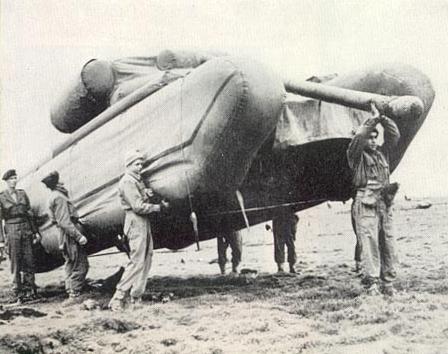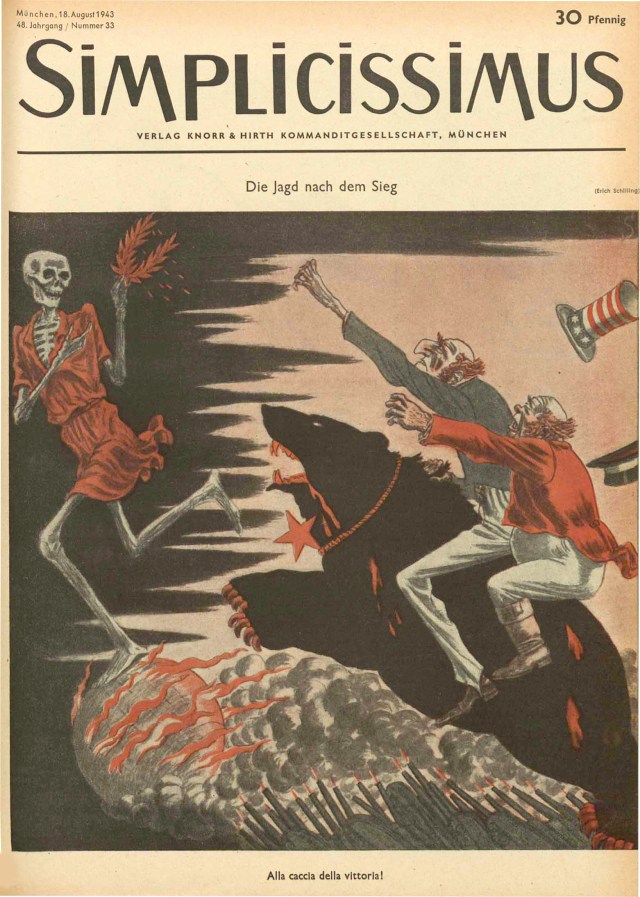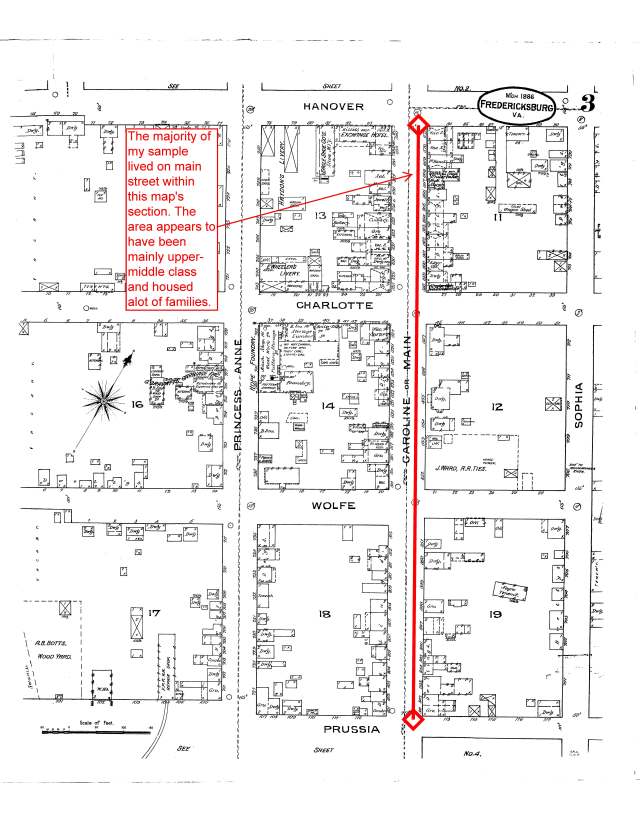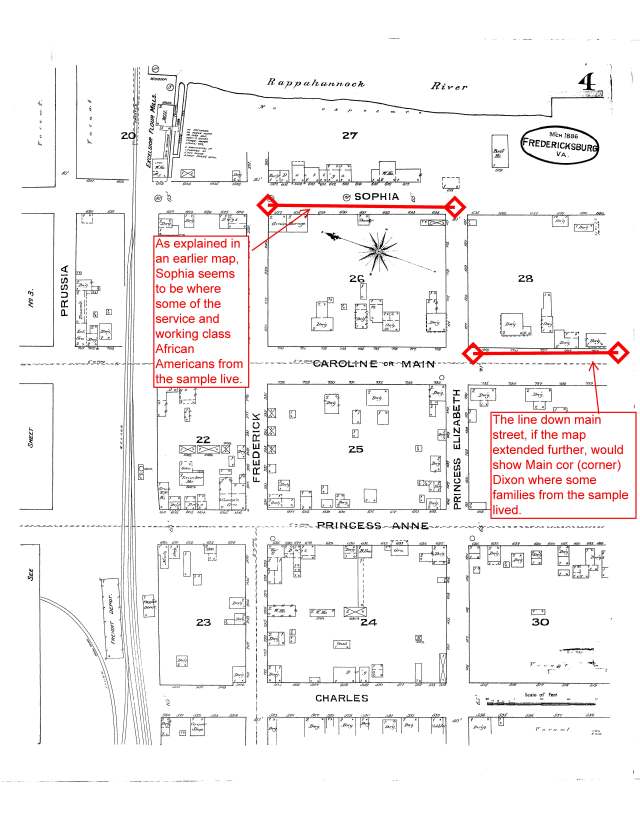
For this week’s problem we looked at a painting from 1813 titled the “The Quilting Frolic” by John Lewis Krimmel and selected an item, or set of items, to research into. Krimmel was a German-born American who became well known for doing genre paintings. This painting in particular depicts a middle class family as they host a quilting party. Many of Krimmel’s paintings depict families located in Pennsylvania, and this one is no exception. For this task I was assigned the gun, powder horn, and pouch over the door on the right side of the painting.
In the book War of 1812 by Miriam Greenblatt and John Stewart Bowman the function and positioning of these items is explained thus: “Ammunition consisted of cartridges, or lead, balls, that weighed about 1 ½ ounces apiece. Each cartridge was wrapped in paper and carried in a cartridge pouch that dangled from a soldier’s waist or shoulder. A soldier also carried gun powder in a horn.” (Greenblatt and Bowman, pp. 61)
The powder horn and pouch were the first items of the three I turned my attention to. The pouch is likely a cartridge pouch and would have held the ammunition for the gun. The horn was often home made from the horn of an animal, usually a bull. Powder horns could become quite the symbolic works of art with fine details and images carved in; however, it seems that the horn depicted in this painting is relatively dull outsides of the gilded tips. The best explanation I found relating to powder horns, muskets, and their symbolic relationship to their owners was found in the introduction for the book written by John Bivins in Folk Art of Early America: The Engraved Powder Horn by Jim Dresslar. Because I find it relevant, I have quoted the passage in full below:
The powder horns slung over the shoulders of these frontiersman-and those of the generations of riflemen that followed them-by virtue of having been “carved with a variety of whimsical figures and devices,” were no less symbolic to their bearers than the long rifles which they carried. In some respects, they were perhaps an even more powerful statement of the individualism of the rifleman, since these horns more often than not were the work of the owner himself. The business of producing “rifle-barreled firelocks” and long fowling pieces were the province of professional artisans skilled in several media and working with a host of specialized tools. The decoration of a horn by its owner, on the other hand, was not proscribed by any technical methodology or sense of design gleaned from a seven-year apprenticeship. Instead, it was art of the moment, cut into the surface with tools often no more sophisticated than the point of a small knife, yet with every intention to record a place, an event, even a state of mind. Horns became foreshortened road maps of the vast frontier, incised townscapes, flights of imaginative fancy, and sketches of noble game pursued and gathered-or lost. They also carried start messages fraught with the dark side of living in a new land. No travel narrative of the period ever could have produced a more poignant image of the harsh realities of the time and historical geography which that backcountry rifleman recorded on his powder horn.
The decoration of a horn, then, was an intensely personal experience, and expression of self and place, and a record of things not to be forgotten. That these objects so often were finely wrought, carefully scraped to exquisite thinness and cameo-cut with profiles at times rivaling classical architectural detail, is a measure of the importance of what their owners intended to convey, if only to themselves. The were often intended as a record, and there is certain didactic nature to many of their inscriptions. “I with my brother ball, hero-like, do conquer all” was not mere backwoods swagger, but an attribute of self-sufficiency that was absolutely necessary in an emerging society.
The men who carried these horns may have been woods-ranging long hunters, militiamen, serving hard duty in a far-flung string of back country forts, or simply yeomen and townsmen alike participating in shooting at the mark-the principal recreational sport of early America. They all shared a common ideology. Their rifles and fowlers were exceptionally visual symbols of freedom, of the ability to own and freely carry a weapon for protection, sport, or public service. Such a thing had been virtually unknown in Britain and on the Continent except among the wealthy classes or tightly-disciplined ranks of a standing army.
If the rifle or long fowler was an expression of freedom, the horn that was carried with it was a more extensive document of the individual himself, no less than his own signature, and no matter the degree of naiveté or sophistication that characterized its decoration. His longarm may have represented a pinnacle of American gunmaking skill, and today-if it has survived-a pinnacle as well among all objects of American decorative art. But the powder horn does not hang in the shadow of the longrifle or fowler now, any more than it did when it use. With a mesmerizing appeal engendered by their sinuous form, their velvet feel in the hand, an amber aura of patination, and above all their timeless incising-which carries all the mute power of prehistoric pictograms-powder horns quite rightly are a study unto themselves.
Finally I turned my attention to the main attraction: the gun. My first step in identifying this gun was to puzzle out if it was a hunting model or a war oriented model, such as might be used by the army of militia. After this piece of information was discovered the next step would be to decide it if was a rifle or a musket. Finally, the last step was to specify down, as much as possible, what make and model the gun might be and where it may have been employed.
The other military items and especially the military style uniform to the left of the mantle helped me answer my first question. Thanks to Jacob’s blog post, the uniform was identified as possibly being that of a Pennsylvania militia unit. My own brief research on that item done earlier in the week correlates with that portrayal. Furthermore, according to the Canadian sponsored Official War of 1812 Bicentennial Website, “smoothbore muskets were used by the vast majority of U.S. regulars and militia during the War of 1812, although a significant minority did use rifled weapons.” (http://www.visit1812.com/history/USRifle.html). War of 1812 also states that “From the 1500’s to the 1800’s, the most common weapon used by soldiers was the musket, or flint lock. It was five feet long and weighed about 10 pounds…Until the 1800’s, muskets were expensive. They were made by hand, and each musket took about one week to make. Moreover, no two muskets were exactly alike, so it was not possible to “cannibalize” parts…After the use of interchangeable parts was adopted in the early 1800’s, the situation changed. Now a single factory could turn out thousands of guns a year, and for a much lower price.” (Greenblatt and Bowman, pp. 61) If the military articles are militia in origin and most Americans who were in the militia used smoothbore muskets, it stands to reason that looking at smoothbore models might be a good starting point and so this is where I began my search.
The only identifying features I had to go off of were those shown in the painting, and these were limited by the fact that the gun is shown sideways and with the finer details unportrayed. I did check on hunting models at the start just in case my assumption was inaccurate using the Journal of the National Rifle Association’s visual guide online (http://www.jaegerkorps.org/NRA/Hunting%20Guns%20in%20Colonial%20America.htm), but none of them matched and I was strengthened in my suspicion that this was a military style gun.
The best source I found for visual representations of military muskets was found in the form of George Neumann’s book Battle Weapons of the American Revolution. The Journal of the National Rifle Association’s webpage on the Brown Bess was also very helpful (http://www.jaegerkorps.org/NRA/The%20Redcoat%27s%20Brown%20Bess.htm). After comparing many images, using what features I could make out in the painting, I came to the conclusion that it was likely a “Brown Bess” aka what is officially known as the Land Pattern series (came in short and long forms).
The Land Pattern first came into being in 1722 with the Long Land Pattern, which was made from 1722-1793 and was the standard infantry musket until 1768 when it was replaced in part by the Short Land Pattern and later models. Although British in origin these muskets would have been used by Americans. There is some debate over how the nickname “Brown Bess” came about. While not a valid source for research, the gun’s Wikipedia page does produce one explanation which seems valid when it states that “More plausible is that the term Brown Bess derived from the German words “brawn buss” or “braun buss”, meaning “strong gun” or “brown gun”; King George I who commissioned its use was from Germany. The OED has citations for “brown musket” dating back to the early 18th century which refer to the same weapon. Another suggestion is that the name is simply the counterpart to the earlier Brown Bill.”
In total there were seven types of Land Pattern models that were produced. The earlier models had no place to attach a bayonet and as such are likely not what is shown in this painting, since the gun in the painting does have a bayonet which is hanging in front of the uniform to the left. Earlier models were also longer, about 159cm in length while this gun looks to be slightly shorter. The painting is not detailed enough on the view of the gun to tell exactly which model it is but I can narrow it down with logic to three models. If the person was in the Navy it could be a Sea Service Pattern. Perhaps the photos over the mantle of the ships are trying to hint at such a reading. However, the uniform really makes it more plausible the owner was in the militia and not out at sea, so it is likely not this model. Two other possibilities would be the India Pattern used from 1797-1854 (by 1812 the standard infantry musket), or the Short Land Pattern from 1740-1797 which would still be in use for infantry by 1812 especially if personally owned before the war. Looking at images of each model, I think it looks more like a Short Land Pattern model, but it could be either since the features I need to clearly see are lacking in this painting.
The presence of this gun with the pouch, powder horn, and other military items indicates that someone in the family owning the house which is throwing the party likely served in the militia or military. This tells me that they were likely patriotic. It could also be a sign that they have sons, but it is just as likely the items belong to the father of the household.
Using the approach found in the book we read this week on Victorian culture relating to items, a fair amount can be said about these three items above the door and what they represent. As the passage quoted above on the powder horn shows, these items were more than just a gun and its equipment—they were a symbol of American freedom and masculinity. By placing them above the door (surely not the best place for such a heavy item as a musket), the family was stating that they wanted these items to be the last impression people had of their home and family as they left into the outdoors. This could also be a way of marking the path to the (perceived masculine) outdoors from the (perceived feminine) indoors.
Collectively, the items in the room tell the story of a middle class American family and reveal in the forms they take and the locations they are placed in, the values and viewpoints of the family on the culture around them. A gun and its instruments may seem dull to research, but they can speak truths to those who but listen to their tongue. The model can reveal information on how, when and why it was made. The possession of such an item with the knowledge of where it came from can help add context to the owner and where they have been. Noticing how such items were treated and what other items they relate to in a house reveals a deeper cultural and normative context about the family. By displaying this gun, which had become far more affordable by 1812, and other military articles this family was proclaiming their views on freedom, gender, stance in relation to their country, and perhaps stance in relation to the war of 1812 as well. It is highly unlikely these items would be displayed in such a public place had the family not been proud of their service and, at least to a degree, agreed with the USA’s participation in the war.








